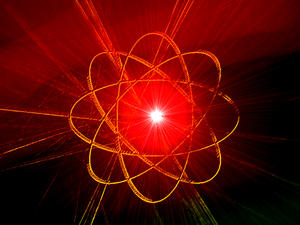
 The super-heavy elements which have all been manufactured in the laboratory, are highly unstable systems with extremely low production cross sections. Due to this the creation of new ones is very difficult. On the other hand, not all super-heavy isotopes of known super-heavy elements have been produced yet, and it is not excluded that among them “hide” some surprisingly long-lived one, either in its ground states or excited isomeric states. Therefore, it may be worthwhile to search for such nuclei and for such long-lived configurations, where its enhanced stability may result from the K-isomerism phenomenon which is based mainly on the (partial) conservation of the K-quantum numbers. (Where K is a total angular momentum along the symmetry axis and is a “good” quantum number in the case of axial symmetry). In general, the existence of such isomeric states is rather well established in nuclear structure physics, however the hindrance mechanisms responsible for slowing down their radioactive decay are still poorly understood. In particular, a hindrance of α decay, which is a prominent decay channel of super-heavy nuclei is not well elucidated. For those nuclei, hindered α transitions would lead to an increase in α-lifetimes and extra stability.
The super-heavy elements which have all been manufactured in the laboratory, are highly unstable systems with extremely low production cross sections. Due to this the creation of new ones is very difficult. On the other hand, not all super-heavy isotopes of known super-heavy elements have been produced yet, and it is not excluded that among them “hide” some surprisingly long-lived one, either in its ground states or excited isomeric states. Therefore, it may be worthwhile to search for such nuclei and for such long-lived configurations, where its enhanced stability may result from the K-isomerism phenomenon which is based mainly on the (partial) conservation of the K-quantum numbers. (Where K is a total angular momentum along the symmetry axis and is a “good” quantum number in the case of axial symmetry). In general, the existence of such isomeric states is rather well established in nuclear structure physics, however the hindrance mechanisms responsible for slowing down their radioactive decay are still poorly understood. In particular, a hindrance of α decay, which is a prominent decay channel of super-heavy nuclei is not well elucidated. For those nuclei, hindered α transitions would lead to an increase in α-lifetimes and extra stability.
All the above-mentioned facts were the motivation of our recent study, the aim of which was to find the candidates for long-lived high-K isomers in a range of even-even super-heavy nuclei from seaborgium (Sg) to copernicium (Cn) by studying their dominant α-decay channel of two- and four-quasi-particle configurations at a low excitation. More detailed information about our search can be found in the article: Hindered α decays of heaviest high-K isomers, P. Jachimowicz, M. Kowal, and J. Skalski, Phys. Rev. C 98, 014320 (2018),
as well as here... in a language understandable to the educated non-physicist.
Generally, the main results of our study can be summarized as follows. We have found a quite strong hindrance against α decay for four-quasi-particle states π2v220+ and/or π2ν219+ in 264-270Ds (isotopes of darmstadtium). The predicted half-life for the four-quasiparticle state in 264Ds as well as in 270Ds is of the order of seconds (!) which allows one to think about chemical studies of such isomeric states instead of ground states. Contrary to what has been recognized so far, our analysis indicates that the α-decay hindrance in Ds nuclei results mainly from the two-quasi-proton excitation. The most prominent hindrance of the α decay among the two-quasiproton π210– states is predicted for 272Ds.
It is even not excluded that such long-lived super-heavy configurations were already produced before, but setup and electronics dedicated to the milliseconds measurements could not detect decays of objects living much longer. This intriguing possibility should be checked first. We have great hopes that such experiments will be done in the nearest future.


